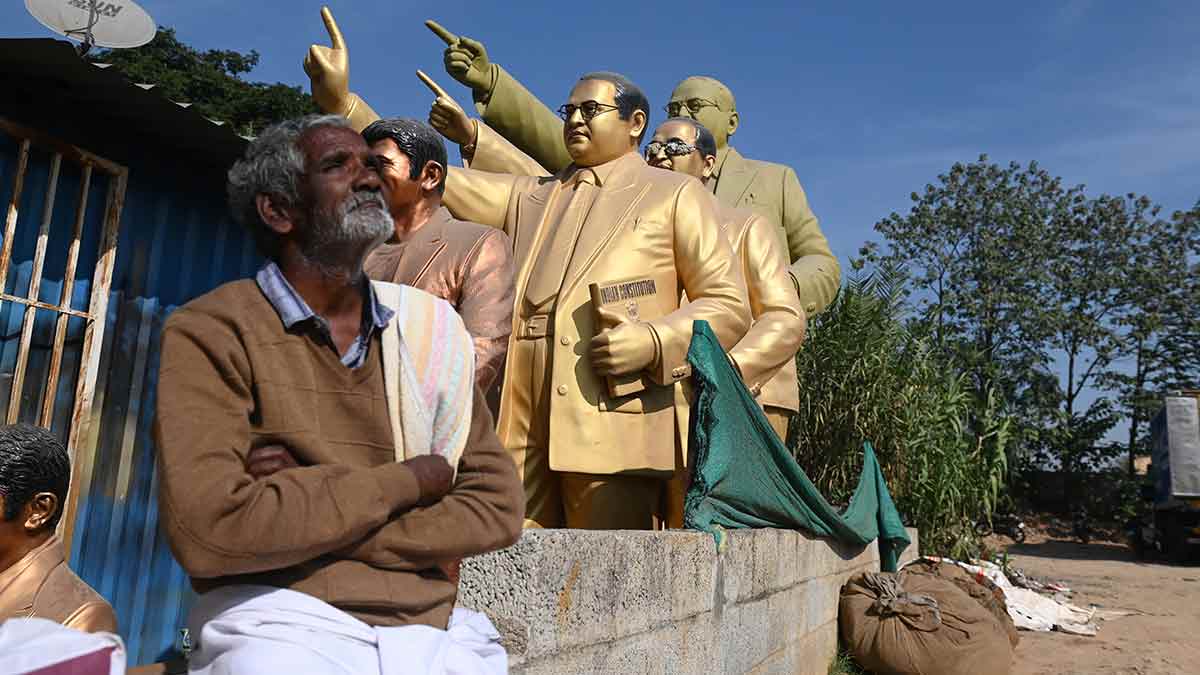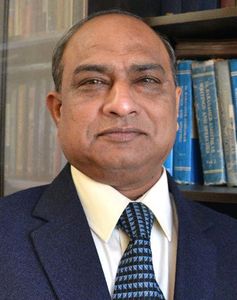In the 75th year of its promulgation, the government of the day decided to celebrate the Indian Constitution round the year. Instead of having an informed debate, Indian political parties are trying to gain brownie points by claiming that they revere B.R. Ambedkar the most. As a result, Ambedkar’s contributions to the Indian Constitution have been relegated to the periphery. Therefore, it is pertinent to understand the most crucial role played by him.
We should analyse Ambedkar’s contribution to the Constitution at two levels. One as an ordinary member of the Constituent Assembly and second as the chairman of the Constitution drafting committee. The Constituent Assembly passed the Constitution in two years, 11 months and 17 days. That means Ambedkar was part of the assembly for 1,081 days. He was defending the Articles of the draft for 165 days, during 11 readings and worked for 141 days as the chairman of the drafting committee.
IN THE CONSTITUENT ASSEMBLY
As a general member of the Constituent Assembly, Ambedkar acted as a conscience keeper, guiding the members on the general principles for building a constitution and, thereby, a nation. Ambedkar was elected to the Constituent Assembly against all odds and with heavy opposition from the Congress party, thanks to the Scheduled Caste Federation (a party he established in 1942) and the Muslim League. That is why he had to move to Bengal (a general seat).
As a member of the Constituent Assembly, Ambedkar made his first intervention on December 17, 1946, with a 3,310-word speech. He evaluated the aims and objectives of the Constitution laid down by Jawaharlal Nehru. Ambedkar was critical because, according to him, although Nehru had included a few rights for the people, he had not mentioned any remedies for the same. It did not even say no one could take away life, liberty and property of others without due procedure of law. Ambedkar wondered whether social, political and economic justice was possible in such circumstances. That is why he called Article 32, which ensures citizens justice in case their fundamental rights are infringed upon, the heart and soul of the Constitution.
Ambedkar’s second intervention was even more crucial because he was attempting to create a truce between the leaders of the Muslim League and the Congress. Ambedkar said: “When the future of the nation is decided, the prestige of individual leaders and parties have no value.” He added that if anyone was thinking of solving the “Hindu-Muslim problem” by force, the country would be perpetually conquering them.
DRAFTING COMMITTEE CHAIRMAN
As chairman, Ambedkar played a more technical role in formulating specific articles and their sub-clauses, protecting rights and privileges of the people on the one hand and laying down the specificity of the institutions on the other. Edwina Mountbatten’s letter, congratulating Ambedkar for being elected the chairman, revealed that one Mr Valara had suggested his name for the job. It is essential to mention this because it deconstructs the oral history of Ambedkar’s nomination. By now, we know that Valara was the Irish freedom fighter and constitutional expert who had framed Ireland’s constitution in 1937.
The drafting committee had seven people. T.T. Krishnamachari, a respected member of the Constituent Assembly, highlighted that of the seven, six members could not contribute anything because of their resignation, ill health and because they were preoccupied with other work. Ambedkar bore the burden of drafting the Constitution alone.
In his 8,334-word address to the Constituent Assembly on November 4, 1948, he said that when the draft constitution was prepared and put to the scrutiny of various groups, there were 7,635 suggested amendments. He read all the suggestions and discarded 5,162 as he found them to be of no consequence. He incorporated the remaining 2,473 amendments into the draft. Keep in mind that these were technical and conceptual amendments for establishing the rights and privileges of the people on the one hand and the specificities of the institutions on the other.
Ambedkar stood up nine to 10 times in the assembly daily to defend the articles of the Constitution. On some days, he stood up 25 to 26 times either to move a motion, to move a supplementary, or to answer a question and change the argument.
CHALLENGING DISSENTERS
One has to record the other significant roles Ambedkar played while drafting and defending the draft constitution. One such role was his objective and convincing answers to members of the Constituent Assembly, belonging to different ideologies and respectfully differing with dissenting voices. For instance, when challenged on the procedure to amend the Constitution, Ambedkar said that the dissent of those who cannot obtain two-thirds majority in Parliament cannot be deemed to be shared by the general public.
Ambedkar appreciated the dissenting voices of Pandit Hriday Nath Kunzru, K.T. Shah, Pandit Thakur Das Bhargava, P.S. Deshmukh, and Naziruddin Ahmad, to name a few. Because of them, he could explain the principles even more clearly. It is important to record his appreciation for S.N. Mukherjee, the chief draftsman of the Constitution, because Arun Shourie, in his book Worshipping False Gods, addressed him as draftsman.
A MEANS OF NATION BUILDING
The most significant function of the Constitution, according to Ambedkar, was to establish equality, liberty and fraternity in Indian society. Ambedkar thought these values were the only way to serve the country. According to him, “political power in this country has too long been the monopoly of a few and the many are not only beasts of burden, but also beast of prey”. This monopoly, according to Ambedkar, deprived them of their chance of betterment and the downtrodden were impatient to govern themselves. Therefore, the sooner room was made for the realisation of their aspiration, the better for the few, the better for the country, the better for the maintenance of its independence and the better for the continuance of its democratic structure.
However, his dream looks far from being realised three quarters of a century later. The downtrodden have largely remained excluded from judiciary, bureaucracy, effective political decision making, higher eduction (university, college, professional courses in top institutes and medical), civil society, international NGOs and media (both in TV and print). The number of atrocities suffered by Scheduled Castes and Scheduled Tribes and other marginalised sections further substantiates the point that Indian society is facing a unique paradox of persisting inequality and contest for equality.
Also Read
- PM Modi’s I-Day speech: When THE WEEK featured Hansa Mehta, Dakshayani Velayudhan, other women Constitution makers
- How British laws guided the creation of the Indian Constitution
- Republic Day special: President Droupadi Murmu's tribute to the founding mothers of the Constitution
- Meet the 15 extraordinary women who laid the foundation for a democratic and inclusive India
- How the Indian Constitution endured 75 turbulent years
- Time to formally incorporate Basic Structure Doctrine into constitutional framework: Manish Tewari
Vivek Kumar is Professor of sociology at Jawaharlal Nehru University



